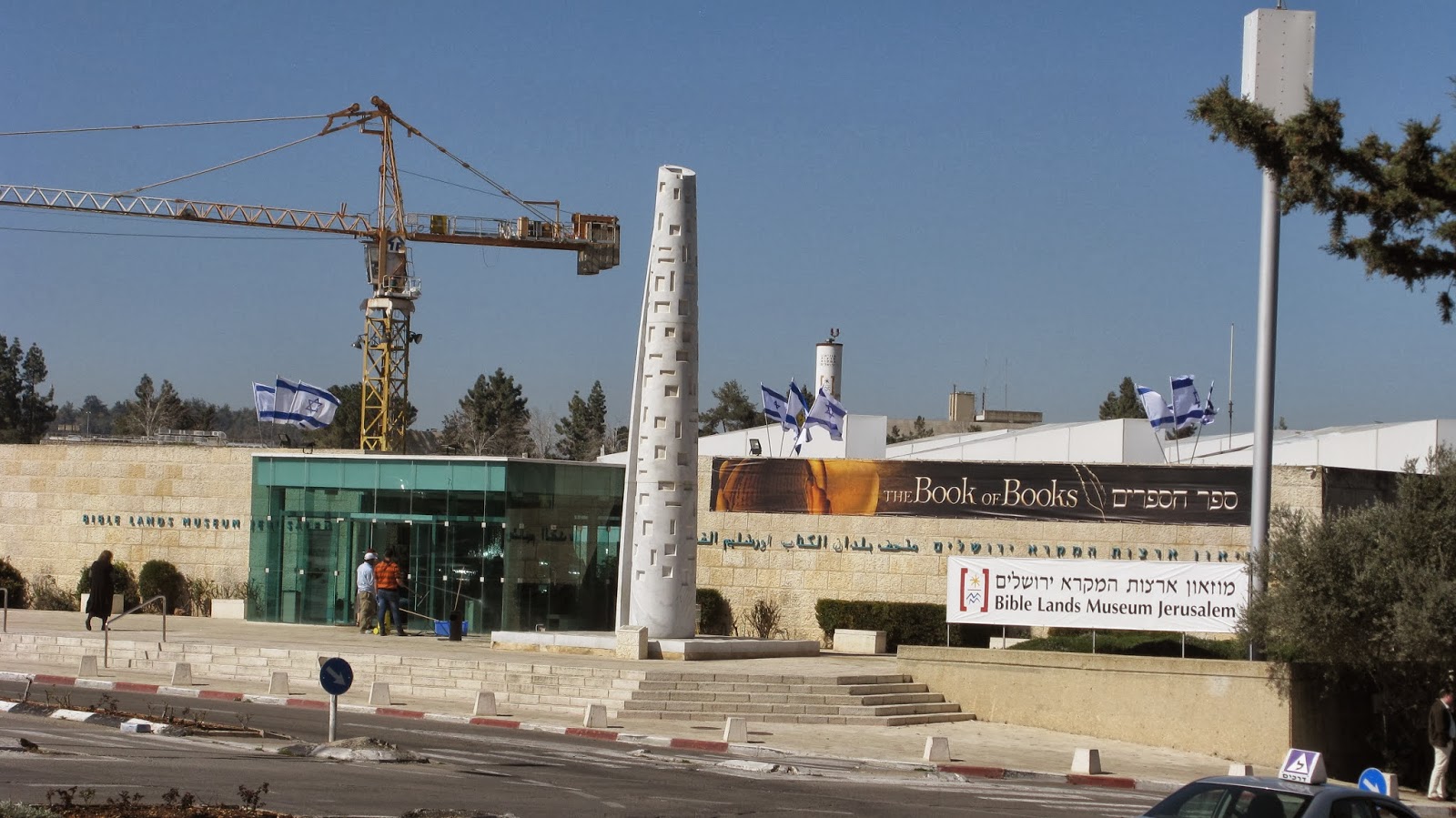"With extraordinary exhibitions and one of the
world's finest collections of Ancient Near Eastern art and archaeology, the
Bible Lands Museum Jerusalem is dedicated to encouraging the understanding and
appreciation of the roots of monotheism through its exhibitions, catalogs and
programs."
I
went to see a new exhibition at the museum: The Book
of Books, which is being shown in cooperation with Verbum Domini, "a network
of international exhibitions that celebrate history’s most influential book—the
Bible. Each exhibit features a unique assemblage of Roman Catholic, Orthodox,
Protestant, and Jewish treasures, displayed against immersive backgrounds, to
tell the story of the Judeo-Christian Scriptures throughout the ages.
The Verbum Domini exhibition series was inspired by Pope
Benedict XVI’s vision of renewed religious passion for the “Word of the Lord.”
The first Verbum Domini exhibit was held at the Vatican in the spring of 2012.
Since then, exhibitions focusing on different aspects of the Bible’s extensive
history have been held around the world, from Cuba to Israel and beyond.
Verbum Domini exhibits feature items from The Green
Collection—one of the world’s largest private collections of rare biblical
texts and artifacts—as well as significant pieces from the collections of major
public institutions and other private collections worldwide."
I was mainly interested in the Jewish treasures, which
included:
Some books from Yemen produced in the 15th and 16th century. These are handwritten, ink on paper renditions of the Pentateuch.
Incantation bowls from 5th century to 8th century Iraq. These are often referred to as "magic bowls," because a circular formula was written in Aramaic which was thought to drive away evil spirits. One is inscribed with the words of Isiah 22:8: "And he discovered the covering of Yehudah, and you did look in that day to the armor of the house of the forest."
With Purim just around the corner, these Megillot caught my eye. The first is an illuminated scroll from Ferrara, Italy from about 1615. The second is from 19th century Morocco. It's ink on parchment, and the silver work on the case probably took almost as much attention to detail as the scroll.
The exhibit also include fragments from the Cairo Geniza and original pages from the Gutenberg Bible, as well as many examples of the New Testament and illuminated Gospels.
The rest of the museum is home to collections of Etruscan, Greek and Roman artifacts, as well as Egyptian and Babylonian relics.







No comments:
Post a Comment
Note: Only a member of this blog may post a comment.